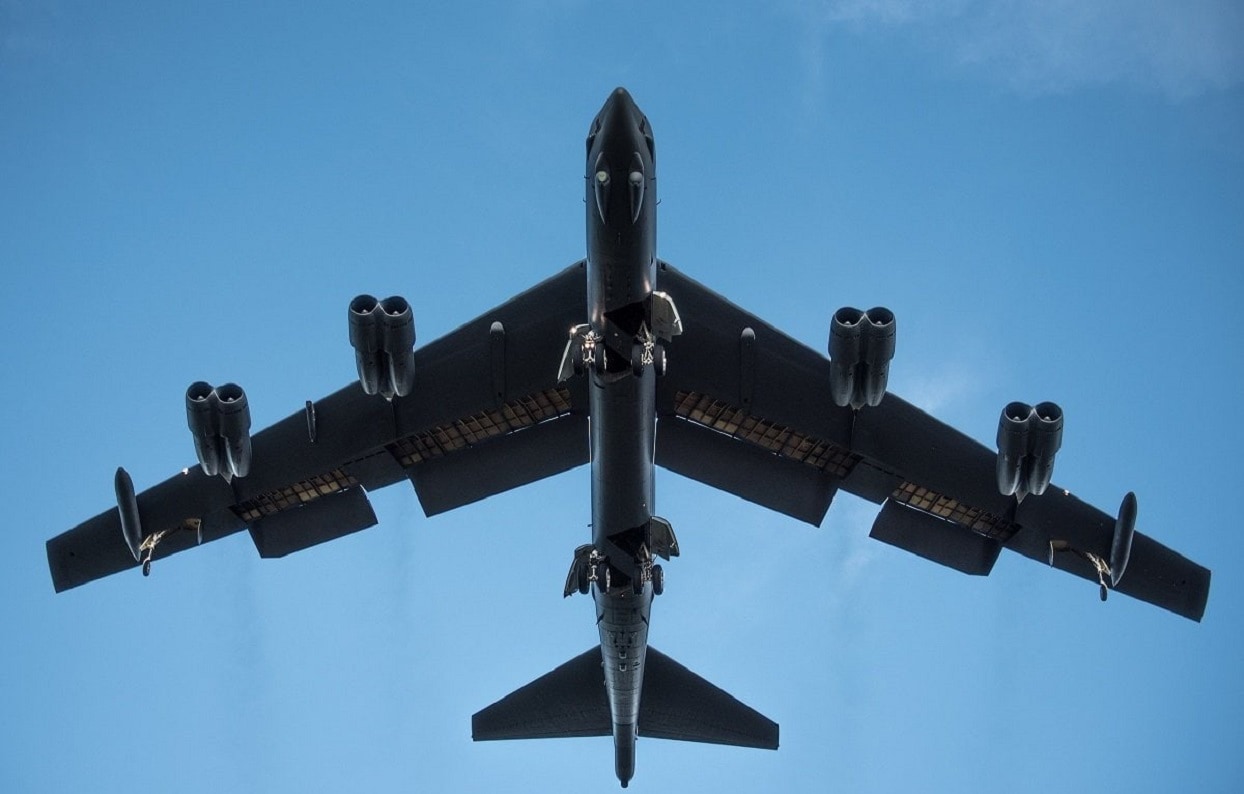The Boeing B-52 Stratofortress long-range, subsonic, jet-powered strategic bomber has logged many miles during its service with the United States Air Force, and it is expected to log even more as the aircraft is now on track to remain in service until the 2040s or later. To keep the bombers flying has required a number of upgrades – including to its engines.
Efforts are now underway to swap out the original Pratt & Whitney TF-33 engines for new Rolls Royce F130 engines.
Radar Upgrade
Another equally important update to the B-52 fleet is now underway.
The first Stratofortress from the 307th Bomb Wing arrived at a Boeing Co., facility in San Antonio, on May 25, to begin receiving Raytheon’s Active Electronically Scanned Array (AESA) AN/APG-79 radar, as part of the Air Force’s B-52 Radar Modernization Program, the Air Force Materiel Command announced on Tuesday.
“The arrival of this aircraft is a big deal, and signals the beginning of a key part of our effort to modernize the B-52 fleet,” said Col. Louis Ruscetta, senior materiel leader for the Air Force Life Cycle Management Center’s B-52 Program Office, which is leading the Radar Modernization Program, and overall effort to modernize the bomber. “AESA will replace 1960s radar technology, and greatly increase the navigation and targeting capabilities of the B-52 in higher threat areas.”
The AESA system will offer increased situational awareness and navigation and targeting ability, while it was also designed to be adaptable, which will allow for new capabilities to address future threats to be added via software modifications. Boeing and Raytheon are now both heavily involved in the installation process of the AESA.
“Boeing is the OEM [original equipment manufacturer] for the B-52, so their long-standing history and knowledge of the platform is really critical to making sure we can get this [AESA] out as quickly as possible,” Ruscetta added. “We are also working with Raytheon on the radar side. Overall, the partnership helps ensure we have a government off-the-shelf solution that minimizes development and helps reduce both the development and test timelines.”
Large Overhaul
The installation of AESA will be one of the largest upgrades to the B-52 in the history of the fleet, and the total effort to modernize the Cold War bombers will reportedly cost around $2.8 billion, with initial operational capability expected in 2027.
“Sustainability is an important part of this effort, because the old radar is unsustainable,” said Ruscetta. “The advancement in combat capability that AESA will bring is really critical in keeping this aircraft effective with our near-peer adversaries. The new radar is an enabler for our long-range standoff capability and will prepare the aircraft for optimized lethality.”
The B-52s with new engines and radars are expected to be ready for service by the end of the decade, the Air Force added. These upgrades will also result in a new designation for the aircraft.
“Any B-52H aircraft modified with the new commercial engines and associated subsystems are designated as B-52J,” the Air Force said in justification documents for its 2024 budget request, per Air & Space Forces magazine.
B-52: The Air Force Workhorse Bomber
The B-52 was the first U.S. long-range, swept-wing heavy bomber. It first took flight back in April 1952 and entered service in February 1955 as an intercontinental, high-altitude bomber, but its operational capabilities have been adapted over the past seven decades to meet changing defense needs.
That included modifications for low-level flight, conventional bombing, and extended-range operations. The current fleet of B-52s can now launch ballistic and cruise missiles hundreds of miles from their targets, and there have been efforts to develop hypersonic weapons that can be employed with the Cold War-era bombers.
A total of 744 B-52s were produced in Seattle, Washington, and Wichita, Kansas, between 1952 and 1962.
Currently, 76 of the aircraft are in the United States Air Force’s inventory. Of those, 58 are now active with the 2nd Bomb Wing and 5th Bomb Wing, while 18 more are in reserve with the 307th Bomb Wing. Another dozen B-52 Stratofortress in long-term storage at the Davis-Monthan Air Force Base (AFB) “Boneyard.” Efforts will continue to ensure that the B-52 remains the workhorse bomber for at least another generation.
Author Experience and Expertise
A Senior Editor for 19FortyFive, Peter Suciu is a Michigan-based writer. He has contributed to more than four dozen magazines, newspapers, and websites with over 3,200 published pieces over a twenty-year career in journalism. He regularly writes about military hardware, firearms history, cybersecurity, politics, and international affairs. Peter is also a Contributing Writer for Forbes and Clearance Jobs. You can follow him on Twitter: @PeterSuciu.
FROM 19FortyFive: How To Sink A $3 Billion Dollar Submarine: Leave A Hatch Open
FROM 19FortyFive – Ukraine War Ending: Putin Sick with Cancer and Passes Away?
FROM 19FortyFive – Ukraine War Ending: Putin Gets Wiped Out in Coup?

